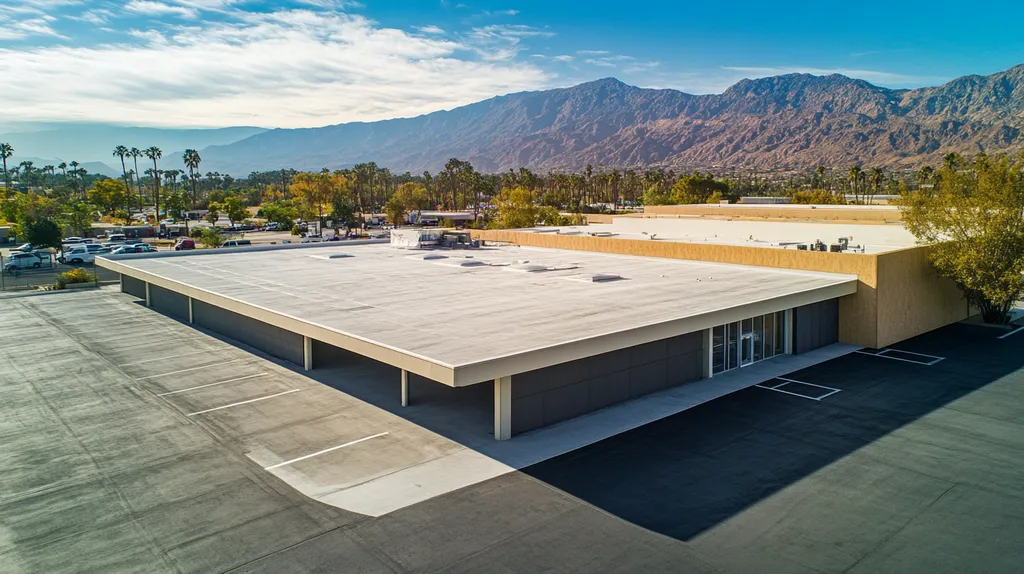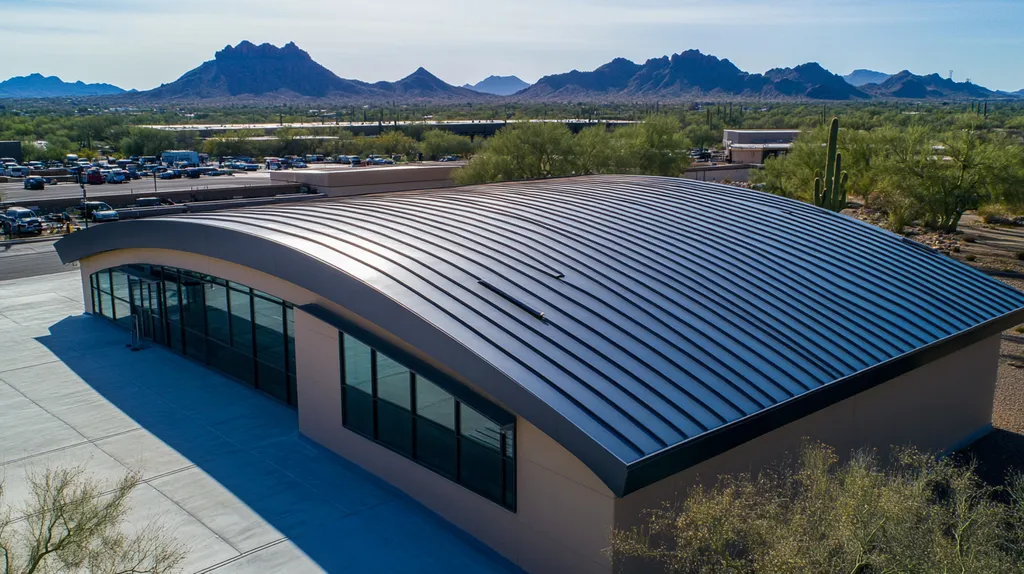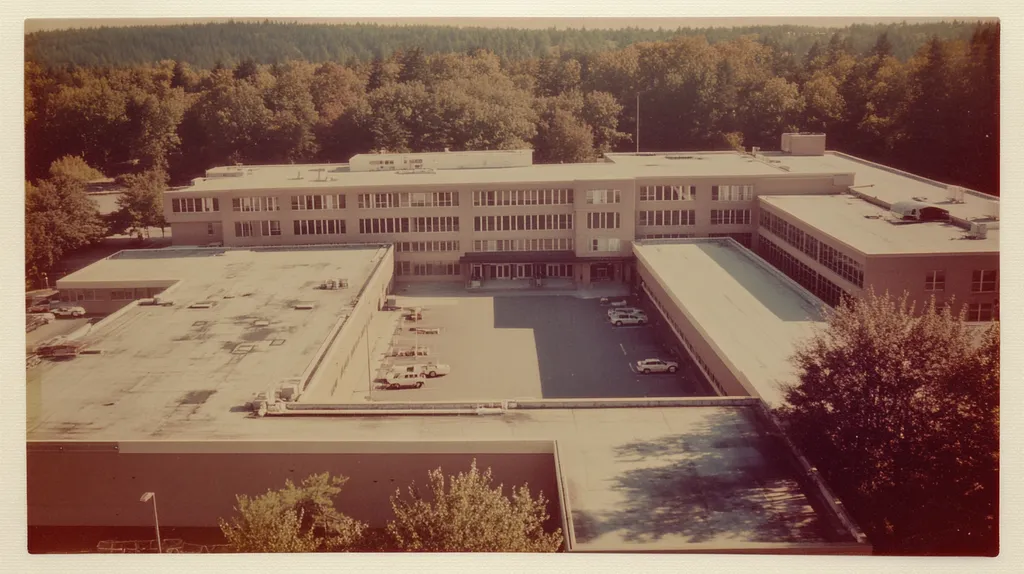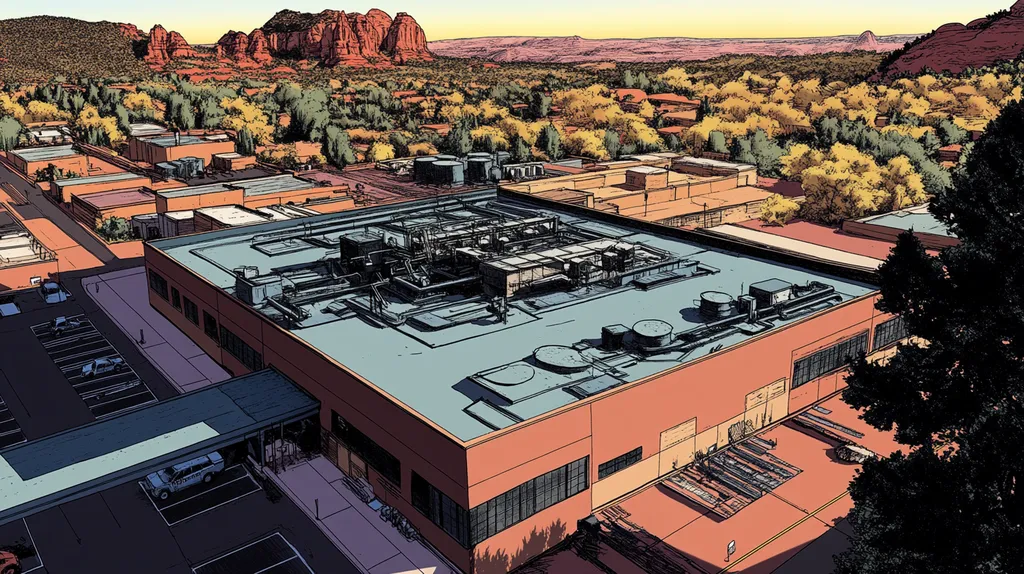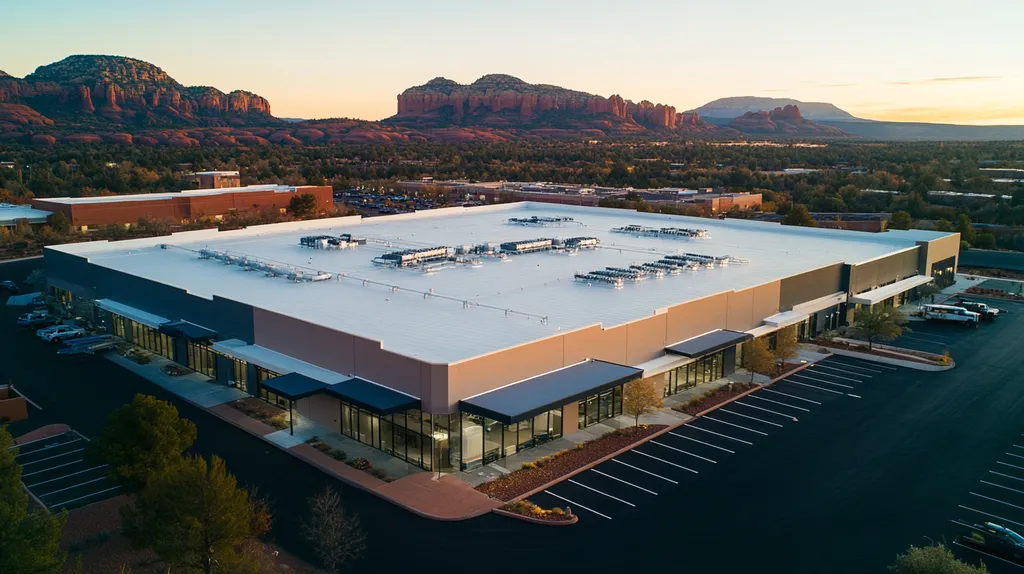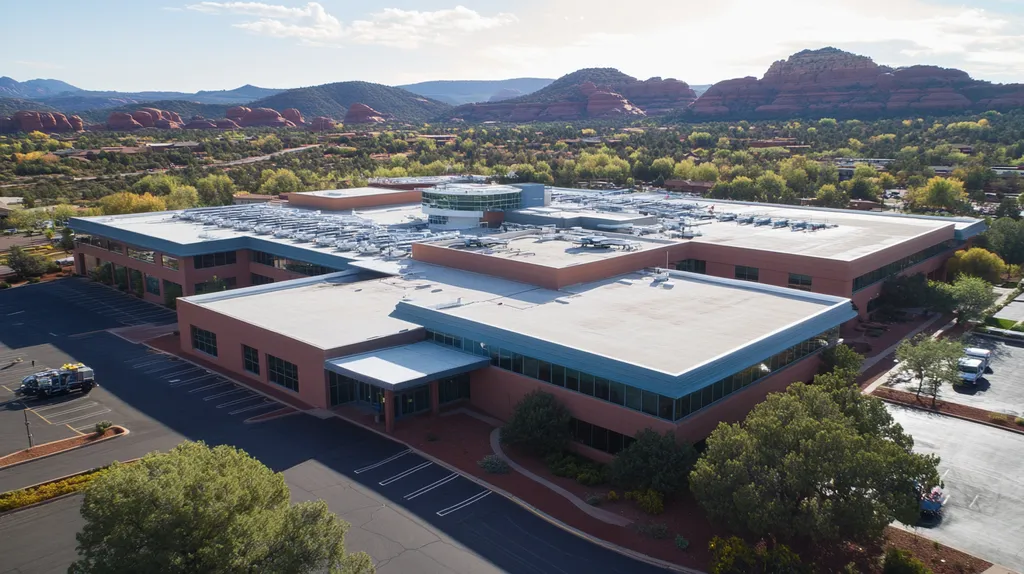With over 5.9 billion square feet of commercial roofing installed annually, property owners face critical decisions about financing these essential investments. Industry data shows that 40% of commercial buildings delay roof maintenance due to payment concerns, leading to preventable structural damage and increased costs.
Understanding available payment options for commercial roof coating projects has become crucial as material costs continue rising by 8-12% yearly.
This comprehensive guide examines financing strategies, from traditional bank loans to government incentives, helping property owners and facility managers make informed decisions that protect their buildings while maintaining healthy cash flow.
SECTION 1: FUNDAMENTAL CONCEPTS
Understanding payment options for commercial roof coating projects is crucial for property owners and facility managers. Industry research indicates that nearly 30% of businesses find it challenging to plan financially for essential roof maintenance. Without a solid financial strategy, delaying necessary repairs can result in significant repercussions, such as water damage, decreased property value, and increased operational costs. This section will delve into foundational concepts vital for navigating commercial roof financing, identify types of roofing projects and their associated costs, and outline effective budgeting strategies.
Understanding Commercial Roof Financing
Commercial roof financing encompasses various methods businesses can employ to fund roofing projects. Options include traditional loans, leasing agreements, or specialized financing tailored for commercial properties. Each choice comes with unique terms, interest rates, and repayment schedules, significantly affecting a company’s cash flow.
Additionally, many roofing contractors offer financing plans that help property owners manage their upfront expenses. These plans may feature deferred payment options or low-interest installment agreements, providing relief for businesses facing budget constraints.
Grasping the differences among these financing options is essential. It enables property owners to make informed decisions aligned with their budget and roofing needs. The right financing solution can bolster a company’s ability to maintain a safe and efficient building.
Furthermore, exploring available federal and state incentives for energy-efficient roofing can significantly reduce overall costs. These incentives make roof coatings a financially attractive choice for numerous businesses.
Types of Roofing Projects and Costs
Various types of roofing projects require different levels of financial investment. Simple maintenance tasks, such as minor repairs or inspections, typically carry lower costs, while extensive projects, including complete roof replacements or coatings, demand a much larger budget.
For instance, a standard commercial roof coating costs between $1.50 and $3.50 per square foot, depending on materials and project complexity. Understanding these price ranges is crucial for property managers assessing budgetary impacts and determining which projects to prioritize.
Moreover, the choice of roofing material plays a vital role in long-term costs. Some options may have a higher initial investment but offer durability and energy efficiency, reducing overall lifecycle expenses. Decision-makers should carefully evaluate short-term costs against long-term benefits.
Lastly, consulting with contractors for detailed quotes and timelines can clarify potential financial commitments. Accurate estimations empower property owners to create effective strategies, ensuring that urgent projects align with available funding.
Budgeting for Roofing Expenses
Effective budgeting is essential for managing roofing costs over time. Property owners should begin by analyzing historical maintenance expenses to recognize patterns and forecast future spending accurately. This process facilitates resource allocation, helping avoid unexpected financial strains.
It’s also wise to create a contingency fund specifically for roofing issues. Experts suggest setting aside about 10-15% of the total project cost to cover unforeseen circumstances. This proactive approach can soften the financial impact of sudden repairs.
Regular communication with roofing professionals can further enhance budgeting efforts. Frequent consultations keep property managers informed about their roofs’ condition, allowing for timely repairs and more accurate financial forecasting.
Ultimately, having a well-defined understanding of projected expenses and implementing strategic budgeting empowers facility managers to make sound decisions. This forward-thinking approach not only maintains the integrity of roofing systems but also protects the overall financial health of their organizations.
SECTION 2: SYSTEM COMPONENTS
Property owners must act quickly when considering payment options for commercial roof coating projects. Procrastinating on necessary roofing improvements can lead to severe long-term consequences, including structural damage, energy inefficiency, and safety risks. For example, a seemingly minor roof leak can escalate into a large issue, potentially necessitating a complete roof replacement if not addressed swiftly. This section will outline the critical financing options available, including bank loans, contractor financing, and government grants, enabling informed decision-making.
Bank Loans and Credit Lines
Bank loans and credit lines serve as traditional financing methods for commercial roofing projects, offering immediate capital and flexible repayment terms. A property owner might secure a loan specifically for roof upgrades, dispersing the investment cost over several years. This option can make high-quality roofing projects more attainable.
However, securing a bank loan often demands a solid credit history and substantial collateral. Banks typically require detailed project estimates and comprehensive plans before approving funding, making it essential for property owners to prepare thoroughly. Failing to meet these preconditions can delay or even prevent financing.
Interest rates for bank loans also vary, influencing the overall expense of the roofing project. Property owners should evaluate loan terms and forecast payments carefully to ensure they remain manageable within their budget.
In conclusion, while bank loans offer a viable funding option, they necessitate diligent planning and consideration of potential long-term financial implications.
Roofing Company Financing Options
Many roofing companies provide in-house financing solutions tailored for their clients. This approach simplifies the process by enabling property owners to finance their roofing projects directly through their contractor. Such specialized financing plans can eliminate the need for multiple loans, making funding more straightforward.
Contractor financing often includes attractive promotional offers, such as zero-interest periods or deferred payments. Yet, it’s crucial for property owners to read the fine print, as some financing plans may come with hidden fees or higher interest rates that kick in after an initial promotional phase.
Another benefit of contractor financing is the reduced documentation required compared to banks, which can accelerate project timelines. This quicker process can be vital for property owners needing expedited roofing repairs or installations to maintain operations.
In summary, while roofing company financing provides convenience and accessibility, it is vital to conduct thorough research to secure favorable terms.
Government Grants and Incentives
Government grants and incentives represent valuable resources for funding roofing projects aimed at enhancing energy efficiency and sustainability. Various federal, state, and local programs exist to promote such investments in commercial buildings. For instance, property owners may be eligible for grants that cover a portion of roofing costs if the project contributes to energy efficiency improvements.
To qualify for these programs, property owners must meet specific requirements, including adherence to energy standards. Conducting comprehensive research can help identify applicable grants for individual roofing projects.
In addition to grants, tax credits are frequently available for energy-efficient upgrades. These incentives can significantly lower overall project costs, making quality roofing solutions more financially feasible.
Ultimately, leveraging government grants and incentives can alleviate financial pressure while encouraging environmentally friendly roofing solutions, resulting in benefits for both property owners and the planet.
SECTION 3: IMPLEMENTATION METHODS
When it comes to financing commercial roof coating projects, the right payment options can significantly impact a facility’s financial stability. With the roofing industry on a growth trajectory, it’s crucial to explore these financing strategies without delay. This section will outline various implementation methods, including bank financing, partnerships with roofing companies, and government loan programs. Each of these paths offers valuable opportunities to ease upfront costs and protect investments in high-quality roofing solutions.
Applying for Bank Financing
Bank financing stands out as a primary option for many commercial roof coating projects. Property owners can approach banks for loans specifically designed to cover construction-related needs, including inspection and application costs, helping maintain the integrity of their facilities.
To secure financing, banks typically require detailed plans that outline project estimates and expected outcomes. This transparency helps lenders understand the potential return on the investment, increasing the likelihood of loan approval.
It’s prudent for property owners to shop around, comparing interest rates and terms from various lenders. A well-informed decision can lead to lower monthly payments and more manageable cash flow.
Additionally, understanding the specific requirements for loan applications—including solid financial documentation like tax returns and income statements—can further strengthen a property owner’s case for approval.
Utilizing Roofing Company Partnerships
Establishing partnerships with reputable roofing companies can open doors to valuable financing options. Many contractors offer flexible payment plans that allow property owners to spread the costs over time, making projects financially easier to handle.
These partnerships might grant access to exclusive financing arrangements like zero-interest periods or deferred payments that occur after project completion. Such incentives can make a significant difference in managing upfront costs.
Collaborating with trusted contractors ensures property owners receive not just financial flexibility but also high-quality roofing services. Additionally, contractors may provide insights into material savings that can help reduce overall project costs.
It’s essential for property owners to thoroughly assess a contractor’s credibility and the specifics of any financing deal to ensure alignment with long-term financial goals.
Navigating Government Loan Programs
Government loan programs offer another promising route for financing commercial roof coating projects. Various initiatives at federal and state levels are designed to encourage investments in energy-efficient upgrades.
These loans typically feature low-interest rates and extended repayment terms, alleviating financial pressure while enhancing building sustainability. Programs like U.S. Small Business Administration (SBA) loans provide favorable terms that can be particularly beneficial for property owners.
It’s also worth noting that property owners investing in energy-efficient roofing systems may become eligible for additional state-specific incentives, further enhancing the affordability of necessary upgrades.
To tap into these funding avenues, owners should meticulously research eligibility requirements and application procedures. Local government associations can be valuable resources for navigating the available options effectively.
SECTION 4: MAINTENANCE REQUIREMENTS
Proper maintenance of commercial roof coatings is not just important; it’s essential for ensuring their longevity and optimal performance. Studies show that neglecting maintenance can reduce the lifespan of a roofing system by 30% or more. To prevent costly replacements, property owners and facility managers must prioritize frequent inspections, systematic repairs, and emergency funding strategies.
Regular Roof Inspections and Repairs
Regular inspections form the bedrock of an effective maintenance strategy. Property owners should plan for biannual assessments to catch potential problems before they escalate. Trained roofing professionals can detect early signs of issues, such as cracks or blisters, that may worsen over time.
Timely repairs are vital to prolonging the life of the roof coating. What begins as a minor issue can quickly escalate into major leaks or structural damage if left unattended. A proactive approach can lead to substantial savings in surprise repair costs.
Keeping accurate documentation of inspections and repairs is also key. This log serves as a vital tool for tracking the roof’s condition over time, providing concrete data to inform future maintenance planning.
Additionally, inspections should focus on high-risk areas like seams, edges, and penetrations—locations often susceptible to failures. Addressing issues in these areas promptly can help minimize extensive damage down the road.
Preventative Maintenance Strategies
Establishing a strong preventative maintenance plan is crucial for the durability of commercial roof coatings. This plan should involve regular cleaning of drainage systems and timely debris removal, as clogged gutters can cause water to pool and increase leak risk.
Routine visual assessments are also important for identifying potential issues that might not surface during official inspections. Property owners should instruct their maintenance staff to be vigilant for signs of wear and tear.
Applying a protective sealant every few years can significantly enhance the roof’s durability. This straightforward task can shield the surface from UV damage and slow the aging process, ultimately extending the roof coating’s lifespan.
Ultimately, a consistent approach to preventative maintenance not only minimizes future repair costs but also reduces disruptions. Investing in maintenance today can lead to significant financial savings in the long run.
Emergency Repair Funding
Setting up a dedicated fund for emergency roof repairs is critical for all commercial property owners. Unexpected weather events or quick deterioration can create urgent repair needs. Having pre-allocated funds helps facilitate a swift response, limiting damage to the interior of the building.
With an established emergency budget, property owners can act quickly; when a leak arises, having the necessary funds means repairs can begin immediately without waiting for budget approvals.
It’s also wise for property owners to consider financing options for more extensive repairs. Numerous roofing contractors offer plans that allow for easy payment over time, making it simpler to navigate unforeseen expenses while maintaining the roof’s integrity.
Finally, building a relationship with a trusted roofing contractor is essential. A familiar partnership can lead to faster evaluations and more efficient service during emergencies, ultimately bolstering the property’s overall maintenance strategy.
SECTION 5: PERFORMANCE METRICS
Understanding financial metrics is essential for property owners evaluating payment options for commercial roof coating projects. The choice of payment plan can have a lasting impact on both budget management and the overall performance of the roof. Accurate assessments can help avoid unexpected costs, ensuring that investments in roofing remain sustainable over time. This section will explore interest rates, repayment periods, and the total cost of ownership, providing actionable insights to guide decision-making.
Evaluating Interest Rates and Terms
Interest rates play a pivotal role in shaping the financial landscape of a roof coating project. Lower interest rates can lead to significant savings throughout the repayment period, while high rates can increase costs substantially. For instance, financing a $100,000 roofing project at a 5% interest rate over ten years results in approximately $1,100 per month, whereas an 8% rate raises that payment to around $1,200.
Moreover, it is vital to assess loan terms, distinguishing between fixed and variable rates. Fixed rates offer predictability in payments, helping property owners budget effectively. Conversely, variable rates could be beneficial if market trends suggest lower future rates.
Property owners should also consider competitive offers from various lenders. Evaluating these rates and terms enables property owners to select financing options that align with their budget and long-term strategies.
Assessing Repayment Periods and Flexibility
The length of the repayment period significantly impacts cash flow management for property owners. Shorter repayment periods may lead to higher monthly payments but often result in reduced total interest costs. For example, opting for a five-year term might incur $15,000 in total interest costs compared to $30,000 over a ten-year period.
Flexibility in repayment terms can also be a game changer. Some lenders may allow deferred payments or extended terms during difficult financial times, providing critical breathing room for facilities navigating economic fluctuations.
Ultimately, analyzing repayment periods and their flexibility helps property owners select plans that correspond with their unique financial circumstances and operational needs.
Analyzing Total Cost of Ownership
Total cost of ownership (TCO) reflects all expenses associated with a roofing project, extending beyond the initial installation. This includes ongoing maintenance costs, anticipated energy savings, and the overall longevity of the roofing system.
For example, a well-installed roof coating can enhance insulation, ultimately reducing energy bills. If a facility usually spends $2,000 on energy annually and the roof reduces that by 25%, it translates to $500 in annual savings—adding up to $5,000 over ten years.
Furthermore, assessing the durability and expected lifespan of roofing systems can provide significant insights into their long-term value. Roofs requiring less frequent replacements or repairs can dramatically decrease TCO.
By fully understanding TCO, property owners can make informed and strategic decisions about investments in roof coatings that yield results across the lifespan of the roofing system.
SECTION 5: PERFORMANCE METRICS
For property owners evaluating payment options for commercial roof coating projects, understanding financial metrics is imperative. The right payment plan influences not just immediate budgetary concerns but also the long-term performance of the roof itself. Careful analysis of these factors can help prevent unexpected expenses, ensuring roofing investments are sustainable and beneficial over time. This section will explore critical components such as interest rates, repayment periods, and the total cost of ownership to deliver insights that promote informed decision-making.
Evaluating Interest Rates and Terms
Interest rates are a key element in the financial equation of a roof coating project. A lower interest rate can yield considerable savings throughout the repayment period, while higher rates can inflate overall project costs.
For instance, financing a $100,000 roofing project at a 5% interest rate over ten years results in monthly payments of about $1,100. However, at an 8% rate, that number jumps to approximately $1,200. Understanding these differences allows property owners to make smarter choices regarding their financing options.
Additionally, it’s important to distinguish between fixed and variable interest rates. Fixed rates provide a stable payment structure, facilitating straightforward budgeting. On the other hand, variable rates might be attractive if future market trends indicate falling interest rates.
By reviewing multiple lenders and their terms, property owners can find financing options that align well with both their budget and strategic goals, ensuring the most advantageous financial setup.
Assessing Repayment Periods and Flexibility
The repayment period has a substantial impact on cash flow for property owners. Shorter repayment terms might generate higher monthly payments but typically result in lower total interest costs.
For example, choosing a five-year repayment plan may lead to total interest costs of $15,000, whereas a ten-year option could elevate that to $30,000. Property owners must carefully weigh these factors against their financial capacities and anticipated revenue.
Flexibility in repayment options is equally important. Some lenders may offer deferred payments or extended terms, providing essential leeway during difficult financial periods. This flexibility can greatly alleviate stress for facilities navigating economic ups and downs.
Ultimately, a thoughtful examination of repayment timelines and their flexibility enables property owners to select plans that best fit their individual financial landscapes.
Analyzing Total Cost of Ownership
Total cost of ownership (TCO) encompasses all costs related to a roofing project, extending beyond just the initial installation. This includes ongoing maintenance, potential energy savings, and the anticipated lifespan of the roofing system.
For instance, a well-installed roof coating can enhance insulation, which may lead to reduced energy costs. If an organization typically spends $2,000 on energy yearly and the roof coating reduces that by 25%, that’s a savings of $500 annually, totaling $5,000 over a decade.
Furthermore, understanding the longevity of roofing systems contributes significantly to assessing their true value. Roofs that require fewer repairs and replacements can vastly lower the overall TCO.
In summary, by grasping the total cost of ownership, property owners are better positioned to make strategic investments in roofing solutions that yield long-term benefits throughout the lifecycle of their roofing systems.
The Bottom Line
With commercial roofing costs rising 8-12% annually and 40% of buildings already delaying critical maintenance, choosing the right payment option has never been more crucial for property owners.
From traditional bank loans and contractor financing to government incentives, today’s market offers diverse solutions for funding roof coating projects.
Property owners who understand and leverage these financing options can protect their investments while maintaining healthy cash flow, potentially saving 25-30% on long-term maintenance costs.
The key is taking action now: evaluating available payment options, securing favorable terms, and implementing projects before minor issues escalate into major expenses.
In today’s competitive market, strategic financing of roof coating projects isn’t just about maintaining buildings—it’s about protecting valuable commercial assets for years to come.
FREQUENTLY ASKED QUESTIONS
Q. What are the payment options for a commercial roof coating project?
A. Payment options for a commercial roof coating project include bank loans, contractor financing, and government grants. Understanding these options empowers property owners to select the best financial pathway based on their budget and project scope. Consideration of interest rates and repayment schedules is crucial for maintaining positive cash flow.
Q. How does financing affect my commercial roof?
A. Financing options can significantly impact your project’s affordability and overall cash flow. Understanding the terms of various financing methods allows for better budgeting, ensuring property managers can maintain their roofs efficiently over time. Strategic financial planning is essential for effective asset management.
Q. Are there government financial incentives for commercial roofs?
A. Yes, there are various government grants and tax incentives available for energy-efficient commercial roofing upgrades. These programs aim to support sustainable building practices and can significantly lower your overall project costs. Researching eligibility requirements is key to maximizing available funding.
Q. How should I budget for my commercial roof project?
A. Begin by reviewing historical maintenance costs to set realistic budgets. It’s also wise to create a contingency fund for unforeseen expenses. Regular consultations with roofing professionals can help refine these budgets based on actual roof conditions and potential future repairs.
Q. What role do inspections play in roof maintenance finances?
A. Regular inspections keep roofing issues manageable, preventing costly repairs. By identifying potential problems early, property owners can allocate budgets effectively and avoid larger expenses down the line. Such a proactive approach not only protects investments but enhances operational efficiency.
Q. How can interest rates affect my commercial roofing financing?
A. Interest rates directly impact the overall cost of financing, influencing your monthly payments and total expenses. Lower rates can dramatically reduce financial burdens, while high rates can lead to increased project costs. Evaluating various lenders helps identify favorable terms.
Q. What should I consider regarding the total cost of ownership for commercial roofs?
A. Total cost of ownership includes installation, maintenance expenses, and energy savings over time. A well-maintained roof can reduce overall costs significantly by enhancing energy efficiency. Understanding these factors helps in making informed, long-term financial decisions concerning roofing investments.

